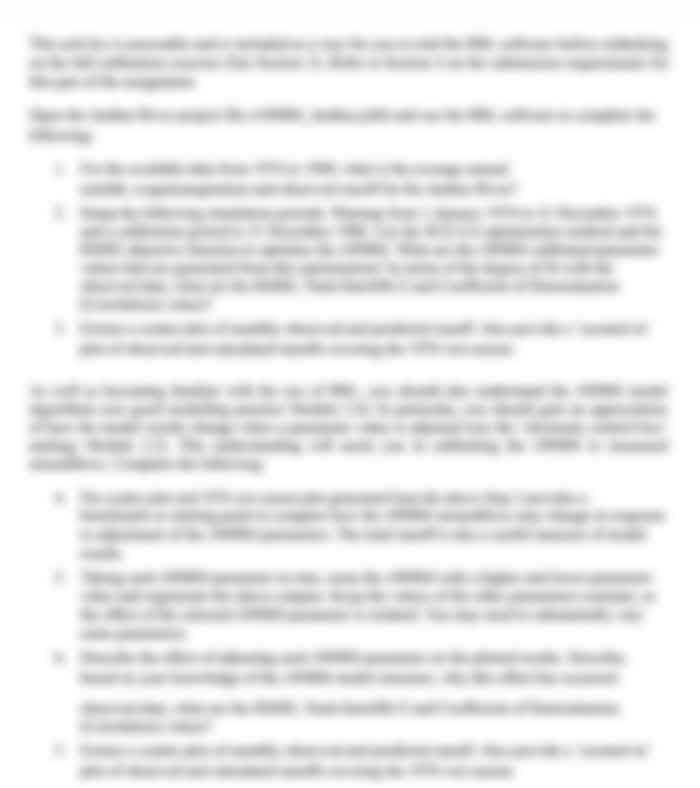Good Shepherd Youth and Family Services has been asked to support the Sheffield Family-Case Study
- Subject Code :
ASW2103
Scenario 5
Good Shepherd Youth and Family Services has been asked to support the Sheffield Family.
The social worker at Good Shepherd Youth and Family Services, have been allocated the case of Sheffield family. The family has been referred to the Brimbank Melton Integrated Family Services Program. This program supports parents and carers to raise children in a safe, healthy and nurturing environments. The program offers parent and family counselling, group work and individual support. Social services have been involved with the family for about a year. Following a number of presentations at Western Healths Emergency Department, the children were briefly placed on the at risk register as they were considered to be at risk of physical abuse.Attending the case conference, called by DHHS to discuss the Sheffield family are: Clementine, the DHHS case worker, Bridget, John and the GSYFS allocated case worker, the speech pathologist.
The public health policy worker for DHHS, present at the meeting, has been tasked with ensuring that the human development issues raised, and relevant to the family members life span, are being addressed within their agency policy and practice frameworks
The Sheffield family consists of Bridget (26 yo), John (32 yo) who left school without any qualifications and has never worked in long term employment and Jayden (13 yo), Erin (9yo) and Katie (2 yo).
Jaydenhas Attention Deficit Hyperactivity Disorder (ADHD) and is often sent home from school without an educational plan. Jaydens teachers report that he is remorseful when he behaves badly and in discussion knows the difference between good and bad behaviour. Jayden says that his dad is a hero and a good fighter, he teaches him how to stand up for himself. The relationship between the school and Jaydens parents is stressful. The school principal is talking about Jayden moving schools. Jaydens parents are annoyed that the school is not doing enough to help Jayden or them to manage the ADHD.
His parents have attempted to model correct behaviour and social rules. They use rewards to try to correct his behaviour. Jayden talks about the noise in his house and reports that his mum and dad fight. He says he also fights with his parents, especially when he wants to do his own things and play his own games.
Jayden does well at games that require skill, strength and agility. He tries hard to belong to a peer group and follow what they do and say. He says he feels good when his friends call him strong and a good footy player. Jaydens is beginning to think and reason in a more logical adult-like way. He sometimes teases his younger sister about the things she thinks are real but are rather just fantasy, like Elsa from Frozen.
Erinwho was born with a cleft palette had difficulty with sucking and swallowing (feeding) during her early years and continues to be prone to ear infections, affecting her hearing. Erins speech is difficult to understand. Erin tries to tell stories, sing songs and read aloud to her grandmother but she is conscious of her speech difficulties. Her grandmother encourages her to try. Erins unclear speech has affected social interaction with her peers. Erin is withdrawn around her peers opting to watch rather than be involved in any interactions.
In school, Erin has shown a great aptitude for problem solving and creativity. Erins use of building blocks and paper crafts to create have been singled out as advanced. When asked where she learnt such tasks, Erin says that her grandmother taught her when she was a baby. Erin loves her grandmother and spends as much time as she can with her.
Katie was a surprise baby, is much loved by her parents and siblings. They often carry and cuddle Katie and brings great joy and distraction to the family. Katies cries are sensitively responded to with eye contact and soothing words. Katies parents have said that Katie is placid and does not appear distressed when they leave her for a short while. Rather, Katie gets on with what she is doing and waves goodbye to them when they leave her for a short time, playing with her toys and exploring the room for other things to keep her occupied.
Katie has begun to drink from a cup and can walk and run. Katie is beginning to sow some individuality and says no a lot. Katie has learnt to speak fluently and has a repertoire of up to fifty words, combining many to communicate her wants. She plays happily and is able to mimic general household chores like washing dishes, mowing lawns etc. Katie is often shown how to do things by her brother and sister. For example, Jayden shows her how to build towers with blocks and after many tries, Katie has mastered building a tower of up four or blocks. Jayden is really protective of Katie and spends a lot of time with her.
Both Bridget and John have had troubled formative years and both have grown up families that have been characterised by violence, unemployment and mental ill-health. Both spent time in foster care and residential care through most of their formative years and met each other at in residential care during their teens. Their relationship has often been interrupted by separation.
Johnhas a history of offending since his teens. John is currently serving a 2+ year sentence with further time possible due to an outstanding drink/drive charge.
His mother regularly fled from the home to seek refuge from the violence but always returned. John survived his family troubles by seeking out the company of others. John remembers his mother being distracted, rarely giving time to him and his siblings. There was always a struggle to make ends meet and the reliance on government welfare support was his perception was that his family was judged as shameful. The group he did like to hang out with was the local gang who met at the Council Park to play basketball. This group was like him. Together they would talk about hopeless schools, rotten police and how they would get back at the system.
John gets on well with his Probation Officer. Joh has not reoffended since the last offence. He sees his Probation Officer every fortnight and looks forward to this meeting. John says that this meeting keeps him on track and is the most encouraging thing his had in the last two years.
The Probation Officer has a strong belief in John and regularly tells John that his past does not define his future. This support helps John adapt to the expectations of an offending free environment.
The Probation Officer has linked John into counselling and job retraining. He is enjoying both and understanding more about his own childhood and the consequences of his family history. John is thinking about retraining as a panel beater. He is hopeful that he can become a great panel beater.
John is learning more positive ways to deal with his anger. He is also learning how to trust something that he realises is needed if he is to reconnect with Bridget.
John describes his relationship with Bridget as problematic, lacking intimacy and the last place he would share his feelings. John says that he would really like to connect with Bridget but he doesnt know how. John says he never learnt how to be a partner.
Bridget, told her worker that she escaped the family to be free from the bashing. She thought that John would protect her because he got it. Bridget reports that she was never taught how to be a parent and that foster carers tried to do their best with her but they were often busy and distracted, anyway, she wouldnt want to get close to them.
Bridget learnt to fend for herself and not to rely on anybody, she just knew that she had to change and adapt to every new situation. By doing this Bridget managed her social interactions. She learnt how to read people and adjust her behaviours to keep herself safe.
Bridget felt that her dream of becoming a nurse was frustrated by having to move in and out of foster care and residential care. Bridget regrets this and hates that she has no money, no future. Bridget states that her children are hard work and that the problems they have created more problems for her, she wishes that they could just be normal. Bridget says she hates it when the school and doctors talk to her, she feels judged.
Bridget is antagonistic towards welfare and wary of their motives. Bridget bases these views on her own treatment as a child. Bridget says that it was her the reliance on social workers and the system that helped her maintain and manage her relationship with her foster care parents.
Assessment 2: Case Scenario Critique Template
|
Introduction and description of allocated family member (150 words) What is this submission about? E.g., the aim of this submission is to oIntroduce your family member Describe how you will develop your submission oE.g., to interpret and analyse (infants/childs name) development using a multidimensional approach (Harms, 2021). oBriefly describe Harms framework |
|
Genogram and ecomap (est. 100 words) Create an inclusive genogram and an ecomap drawing on the case scenario. Refer to activity 2.2. |
|
Applying Harms Multidimensional approach to the case study scenario (1,350 words) Explore the infant/childs development contextually by considering the infants/childs inner world and outer world through the following dimensions: obiological opsychological ospiritual orelational osocial ostructural ocultural What are the risk and protective factors of the child and family members which may hinder or promote the development of the infant/child? |
|
Conclusion (200 words) Summarise the key findings. What conclusions can be drawn about the infants/childs development. |
|
References APA referencing style is used when referencing in text and in the reference list.
|
Remember that:
- Additional information can be found under the Assessment Information tab in VU Collaborate
- The essential readings are the main source of your information.
- Minimum 4 references. Can use secondary citations from the essential readings.
- References are not counted in the word count

